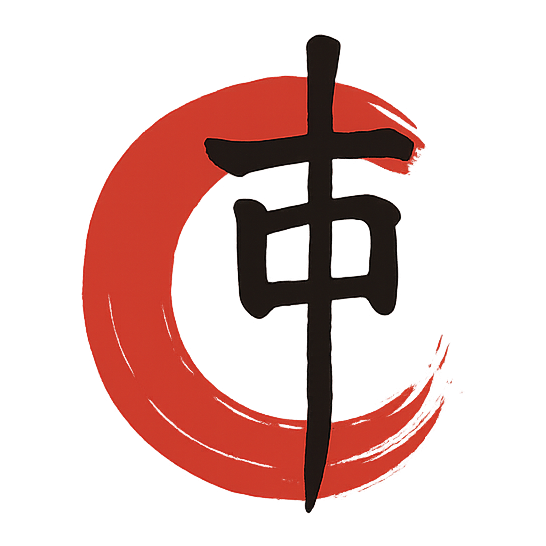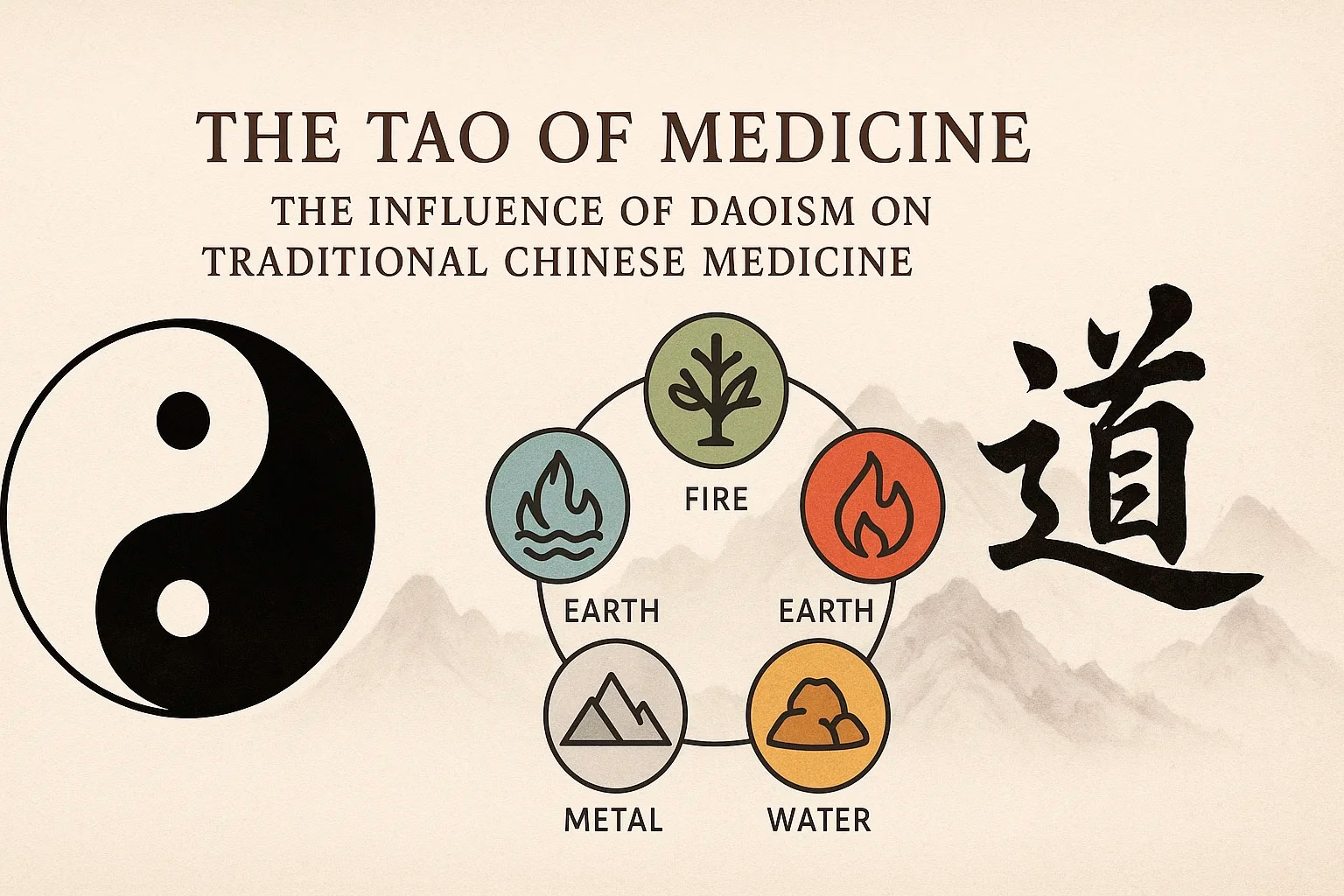🔶 Introduction
Daoism (道家), one of the oldest and most influential philosophical systems in China, has played a pivotal role in shaping the principles of Traditional Chinese Medicine (TCM). At its core, Daoism emphasizes balance, harmony, and the flow of energy within the universe and the human body. The fundamental ideas of Daoism—particularly the concepts of Yin and Yang, the Five Elements, and the Dao (the Way)—are directly reflected in TCM’s approach to health and disease.
This article explores how Daoist philosophy has influenced the development of TCM, shaping its diagnostic methods, treatment approaches, and the understanding of life and health.
🔶 The Core Principles of Daoism and Their Impact on TCM
1. Yin and Yang (阴阳)
The concept of Yin and Yang is central to both Daoist philosophy and Traditional Chinese Medicine. Daoism views the universe as a dynamic balance of two complementary, yet opposing, forces:
- Yin represents the passive, dark, cool, and feminine aspects.
- Yang represents the active, bright, warm, and masculine aspects.
In TCM, health is achieved when Yin and Yang are in harmony. Imbalance between these forces leads to disease. For example:
- Yang deficiency may lead to coldness, fatigue, and low metabolism.
- Yin deficiency may lead to heat, dryness, and insomnia.
Daoism teaches that life is a continuous flow of Yin and Yang, and maintaining balance is essential for both physical and emotional well-being.
2. The Dao (道)
In Daoism, Dao is the Way or path that governs the universe and all living things. It is an ever-changing force that flows through the natural world and the human body. In TCM, the concept of Dao is reflected in the idea of the natural flow of Qi through the body’s meridians.
- Health is seen as the body’s ability to live in alignment with the Dao, allowing Qi to flow smoothly without obstruction.
- Disease arises when the flow of Qi is disrupted, often due to external factors (like pathogens) or internal factors (like emotional stress or poor diet).
The practice of TCM aims to restore the natural flow of Qi, bringing the body back into harmony with the Dao.
3. The Five Elements (五行)
Daoist philosophy also introduced the concept of the Five Elements—Wood, Fire, Earth, Metal, and Water—which are used to understand the interactions between the body’s internal organs and the natural world. Each element is associated with specific organs, emotions, and environmental influences:
- Wood: Liver, anger, spring
- Fire: Heart, joy, summer
- Earth: Spleen, worry, late summer
- Metal: Lungs, grief, autumn
- Water: Kidneys, fear, winter
In TCM, disease often arises from imbalance between the elements, and treatment focuses on restoring harmony by stimulating or calming the affected organs and elements.
🔶 Daoist Practices and Their Influence on TCM
1. Qi Cultivation and Vitality (气的培养)
Daoism teaches the importance of cultivating Qi through practices such as Qigong, Tai Chi, and breathing exercises. These practices are designed to enhance the body’s Qi flow, increase vitality, and promote longevity. In TCM, the cultivation of Qi is crucial for maintaining health, and many of the acupuncture and herbal medicine treatments are aimed at restoring Qi balance and nourishing vital energy.
2. Herbal Medicine and Daoism
Daoist philosophy also significantly influenced the development of herbal medicine in TCM. Daoist herbalism emphasizes the use of natural substances that promote balance, harmony, and the flow of Qi. For instance:
- Ginseng is considered a superior herb for tonifying Qi, improving vitality, and supporting the Kidneys.
- Goji berries are used to nourish Yin and replenish Blood, supporting longevity and overall health.
Daoist texts often described herbal remedies as a way to align oneself with the natural forces of the universe, reinforcing the interconnectedness of body, mind, and nature.
🔶 Daoist Meditation and TCM
Meditation, a core practice of Daoism, has influenced the mind-body connection in TCM. Daoist meditation helps to calm the mind, regulate emotions, and enhance spiritual health. In TCM, emotional well-being is viewed as integral to physical health, and practices like meditation are used to:
- Clear stagnant Qi, which often causes emotional distress such as anger, frustration, and sadness.
- Balance Yin and Yang by calming the mind and allowing Qi to flow freely.
🔶 The Role of Daoism in Modern TCM
In modern times, Daoism’s influence continues to shape TCM practices, especially in areas such as:
- Preventive medicine: Daoist teachings emphasize living in harmony with nature, which aligns with TCM’s focus on preventing disease before it manifests.
- Holistic healing: Both Daoism and TCM focus on treating the whole person, not just the symptoms. The body, mind, and spirit are all interconnected, and health is seen as the balance between these aspects.
- Personalized treatment: Daoist philosophy’s emphasis on individual nature and the natural environment also informs TCM’s approach to personalized medicine, where treatment is tailored to the individual’s unique constitution and lifestyle.
🔶 Conclusion
Daoism has provided a rich and deep philosophical framework that has influenced Traditional Chinese Medicine for thousands of years. The concepts of Qi, Yin and Yang, the Five Elements, and the Dao itself have shaped how TCM understands the human body, disease, and health. By aligning with the Dao and restoring balance, TCM helps individuals achieve physical, emotional, and spiritual well-being.
In both ancient and modern practices, Daoism remains a vital part of TCM, offering timeless wisdom for living a life of health, vitality, and harmony.


发表回复